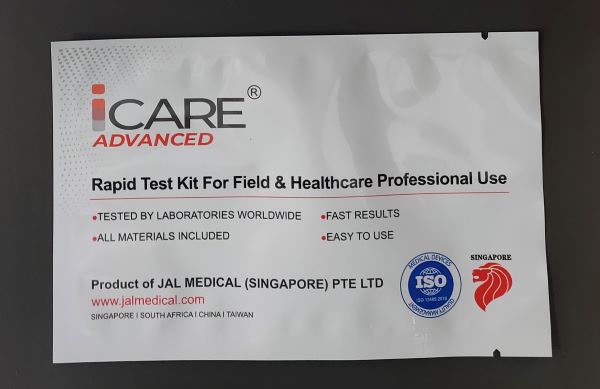Table of Contents
Central Asia, encompassing the vast landscapes from the Caspian Sea and Eastern Europe to Western China and Mongolia, is home to Kazakhstan, Kyrgyzstan, Tajikistan, Turkmenistan, and Uzbekistan. Known collectively as the “-stans,” this region forms a strategic link between Asia and Europe, making it a vital corridor for trade and transit. However, its geographic importance also renders it susceptible to the transit of illicit substances, necessitating stringent border security measures.
Challenges of Border Security in Central Asia
Central Asia’s extensive borders are a gateway to several trade routes. However, the sheer scale of these borders presents significant challenges in curbing the trafficking of drugs and other illegal substances. Drug trafficking remains a considerable issue, with drugs sourced primarily from Afghanistan. The porous borders and limited resources amplify the complexities of effective customs control.
iCARE Multi-Drug Screening Test: A Modern Solution
To combat these challenges, border control agencies in Central Asia increasingly rely on modern drug detection methods. The iCARE Multi-Drug Screening Test stands out as an effective solution. Here’s how it enhances border security:
- Rapid Detection: The test offers quick and accurate detection of multiple substances, reducing the time customs officials spend on inspections.
- Comprehensive Coverage: It screens for a broad spectrum of drugs, which is crucial in a region prone to multiple drug trafficking routes.
- Ease of Use: The test is user-friendly, enabling border officials to conduct screenings without requiring extensive training.
- Portability: Given the challenging terrain of Central Asia, the portability of iCARE tests ensures that customs officials can conduct screenings in remote areas, significantly enhancing the reach of border control operations.
- Cost-Effective: With limited resources available for security in some parts of Central Asia, the affordability of iCARE tests makes them an accessible tool for governments in the region.

The Road Ahead
For Central Asia to continue serving as a crucial global trade conduit while ensuring security, effective customs control measures are imperative. Integrating the iCARE Multi-Drug Screening Test into border security strategies provides a cost-effective and comprehensive solution to the region’s unique challenges. Such proactive measures will significantly bolster the efforts to secure the region from illicit drug trafficking, safeguarding both regional and global security.
Enhancing Collaboration and Coordination
While the iCARE Multi-Drug Screening Test offers an advanced tool for border control, effective customs control in Central Asia requires broader efforts, including regional collaboration and international support.
- Regional Cooperation: The “-stan” countries, with their shared challenges, can benefit significantly from sharing intelligence and best practices. Joint training programs for customs officials across borders can streamline drug detection efforts, ensuring uniformity in procedures and improving overall efficacy.
- Information Sharing: Establishing real-time communication channels between customs agencies can greatly improve the detection of drug trafficking networks. Sharing information on suspected routes, individuals, and concealment methods enhances each country’s ability to detect and intercept illicit substances.
- Technological Advancements: Besides drug screening tests, adopting advanced technologies like automated surveillance systems, drones, and artificial intelligence for data analysis can further improve border security.
- International Partnerships: Partnering with international organizations and countries with advanced customs control infrastructure can provide valuable expertise, training, and resources to Central Asian nations. These partnerships can also support capacity building in regions where customs control resources are limited.
- Legislative Harmonization: Standardizing laws and regulations regarding drug trafficking across Central Asia can facilitate coordinated efforts. Unified legal frameworks would simplify the prosecution and extradition of traffickers and reduce loopholes that criminals often exploit.
Community Engagement and Awareness
The success of any customs control strategy depends not only on technological tools but also on the communities affected by the drug trade.
- Public Awareness Campaigns: Educating the public about the dangers of drug trafficking and the importance of robust border security can help garner support for stringent customs control measures.
- Community Involvement: Encouraging locals to report suspicious activities can act as a force multiplier for customs officials, extending their reach and efficacy.
- Support for Affected Communities: Investing in programs that address the socio-economic issues driving individuals towards the drug trade can significantly reduce the supply chain of illicit substances.
Conclusion
Customs control in Central Asia, a region that forms the crossroads of Eurasian trade, is a multifaceted challenge. Leveraging innovative tools like the iCARE Multi-Drug Screening Test, coupled with improved regional collaboration and community engagement, offers a comprehensive approach to combating drug trafficking. With concerted efforts and strategic partnerships, the region can fortify its borders and ensure a safer environment, contributing to global security and stability.

